

Leopold Live: Chapter One
As Dr. Lopez explains, "Adjusting to social distancing measures has allowed us to think creatively in how we approach our engagement work."
When meeting folks face-to-face with a handshake is out of the question, remaining vigilant in our efforts to support landowners and students in their management efforts has never looked so different. So, we embraced the routines that kept us moving forward and true to our spirit here at NRI through nimble creativity.
In September 2020 we launched Leopold Live, a 5-week series conducted in partnership with the Selah, Bamberger Ranch Preserve to demonstrate to students, landowners and wildlife enthusiasts the original five creative methods conceptualized by Aldo Leopold to effectively manage wildlife populations and their habitats.
And we took it live.
Each week, we be tapped that "Go Live" button with gloves on in the field to show you the fundamental methods of land and wildlife management on a property that uses them every day. We truly enjoyed seeing your names and faces again and could not have been more excited to get to share resources and answer questions from you on the spot!
Just like old times, only different.
Selah, Bamberger Ranch Preserve
For NRI, partnering with the Selah, Bamberger Ranch Preserve helped us bridge a gap for our students and followers that the pandemic-era we’re in has slowly chipped away from our educational spaces: land stewards learn by demonstration and practice.
After purchasing a degraded piece of land in the Texas Hill Country in 1969, ranch owner Mr. J. David Bamberger’s specific goal was to restore it back to functional, ecological health. Over the next 50 years he and his team have worked tirelessly to restore the 5,500-acre ranch, which has become one of the largest habitat restoration projects in the state giving students and stewards alike a team of educators and practitioners who are managing thoughtfully through every season.
As you can imagine, Mr. Bamberger and his team learned many lessons along their land restoration journey and constantly seek to pass along their experiences. In fact, they’re made it their mission to teach ethical land stewardship through both example and outreach. Over the past few decades, the property has served as an open-air classroom for landowners and school children alike to explore and learn through workshops and hands-on experiences.
The Series
Our series hosts, Dr. Roel Lopez (TAMU NRI) and April Sansom (Bamberger Ranch) opened the series with the concept of how Aldo Leopold’s five tools can be used to manage the process of disturbance and plant succession – the basis of sound wildlife habitat management. Bamberger’s Zoologist Jarred Holmes and Ranch Manager Steven “Big Steve” Fulton demonstrated both traditional and modern versions of the axe, with a brush trimmer, chainsaw, and drum mulcher. We covered a lot of ground during the livestream and wanted to end the episode with a live Q&A session with our experts in the field. We truly enjoyed engaging with the viewers to answer on-the-spot questions and provide resources so they may pick up their own axe for wildlife habitat management.
In episode two, we invited an outside expert, Mr. Chad Ellis from the Texas Agricultural Land Trust, to talk to us about grazing management for land stewardship. He reminded us that healthy pastures cannot be cultivated without healthy soils and grazing management systems ensure these are productive for both livestock and wildlife. He then gave a quick demonstration on how to use a robel range pole to measure vegetation, what these measurements mean for rangeland productivity and the importance of continuous monitoring efforts. He and Steven rounded out the episode answering thoughtful questions from the viewers on grazing management and how they can apply these principles in their management plans.
In episode three, we invited our next expert, Dr. Larry Redmon, from Texas A&M AgriLife Extension to give us an overview of the plow in what Mr. Bamberger affectionately calls the “world’s largest birdfeeder”. Dr. Redmon, Steven and Bamberger’s Ornithologist Christina Farrell talked about the uses of the traditional, mechanical plow and the chemical plow (herbicides) in wildlife habitat management. In Week Three, you can see a live pan showing examples of treatment strips demonstrating the use of each method and how they changed over time. Christina stressed the importance of monitoring your bird populations before and after herbicide application to develop an adaptive management plan for the species you are hoping to attract from your management efforts.
In episode four we invited Mr. Mike Krueger, retired Texas Parks and Wildlife Department biologist, to speak about the use of the gun in wildlife population management. Mike and Steven discussed many aspects of regulated hunting practices, particularly seasons and bag limits placed on game species, put in place to ensure sustainable harvest of these resources. They also discussed the importance of hunter safety for all those who wish to participate in hunting as a management practice. The livestream pivoted to Jared, who gave a quick tour of one of the ranch’s wild pig traps and how hunting and trapping can be used to manage this invasive species.
For the final episode of the series, we invited Mr. Todd Nightingale, Regional Fire Coordinator with the Texas A&M Forest Service, to explore the use of prescribed fire in wildlife management. Todd and Steven discussed fire safety, how to plan burns and the associated regulations that come with setting a prescribed fire. Most importantly: the ways to develop a “go or no-go plan,” meaning the restrictions you review on the day of the planned burn that ultimately decide whether the burn should or should not happen. We decided to stick to our demonstration roots and move forward with a live prescribed burn on camera—which could have easily been nerve-wrecking, but we followed Todd’s advice and created a successful burn plan. Altogether, we couldn’t have asked for better conditions to show our audiences a live fire demonstration on camera with a full crew and fire instructor.
After a whirlwind five weeks of live, on-camera demonstrations, we’re looking forward to continuing our partnership with the team, who is more like family now, at Selah, Bamberger Ranch Preserve. Between our two organizations, our mission remains the same and we’re committed to bringing knowledge gained and experiences to you in creative ways.
Before the pandemic, the Selah, Bamberger Ranch Preserve team hosted a myriad of public tours and workshops for landowners, but because of their commitment to safely operate, they will only be able to accept reservations for Private Tours at the moment. If you’d like to learn more, please contact the team at selah@bambergerranch.org to inquire about availability. If you would like to help the team at the Ranch care for one of Texas’ great conservation and education models, your online donation will help to ensure Selah is here for all in the future.
Like the Ranch, we wish all our friends, volunteers and supporters health and patience as we continue to monitor the situation and we will be providing updates as more information becomes available. You can always find NRI and the Selah, Bamberger Ranch Preserve team on Facebook and Instagram as we continue to develop ways to keep good conservation practices at the forefront of stewardship today and for future generations.
Learn More
Private Land Stewardship Academies
Training land stewardship professionals working with private landowners and educating a community of practice on the importance of science-based conservation. Click Learn More for free access to resources.


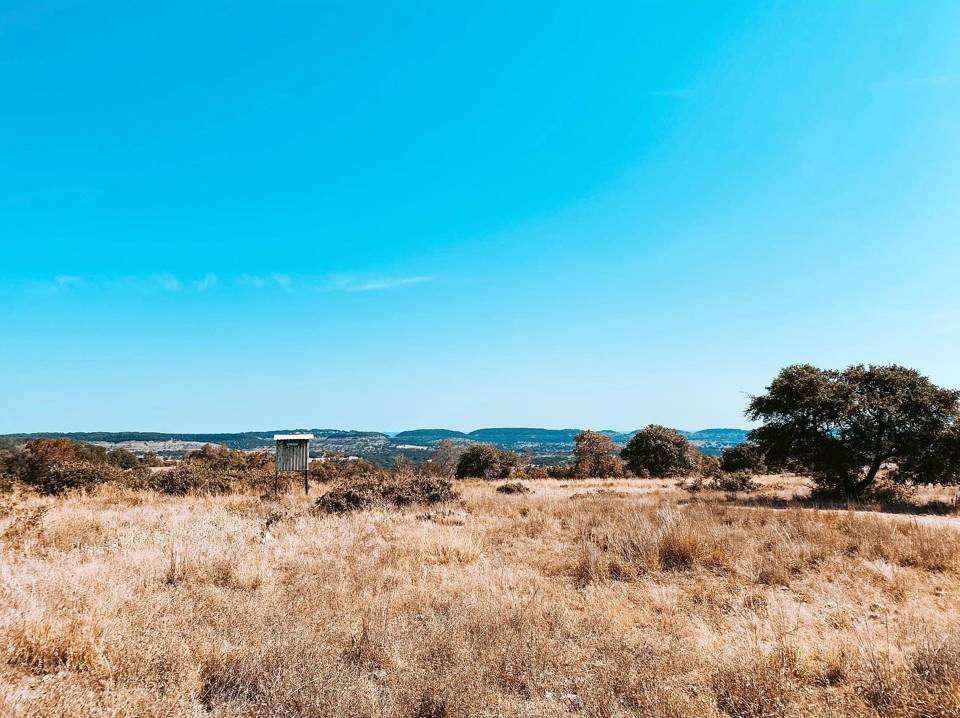 Landscape view of the Selah, Bamberger Ranch Preserve
Landscape view of the Selah, Bamberger Ranch Preserve
 Mr. J. David Bamberger
Mr. J. David Bamberger
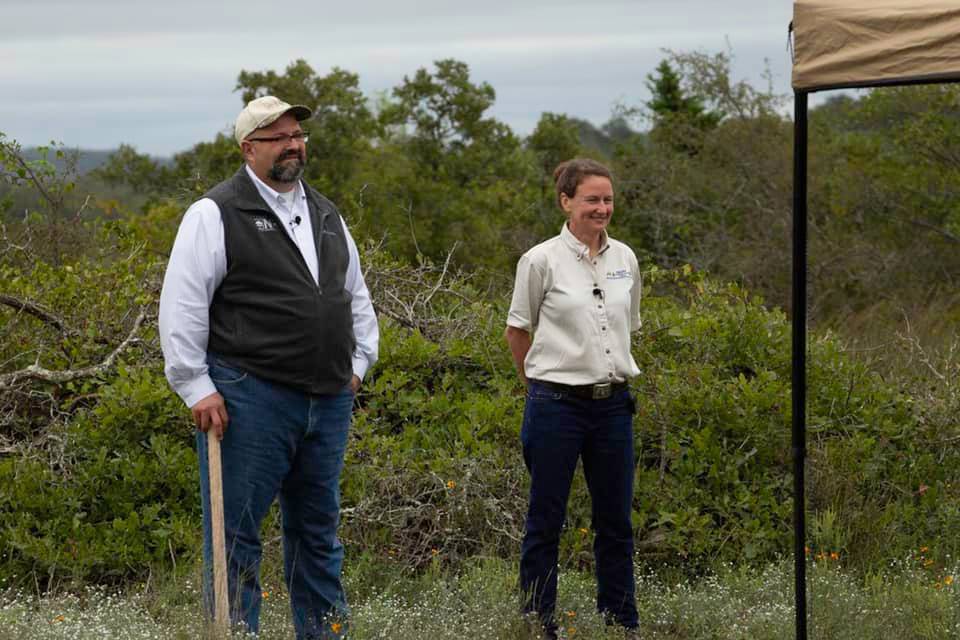 Dr. Roel Lopez and Dr. April Sansom during the filming of The Axe
Dr. Roel Lopez and Dr. April Sansom during the filming of The Axe
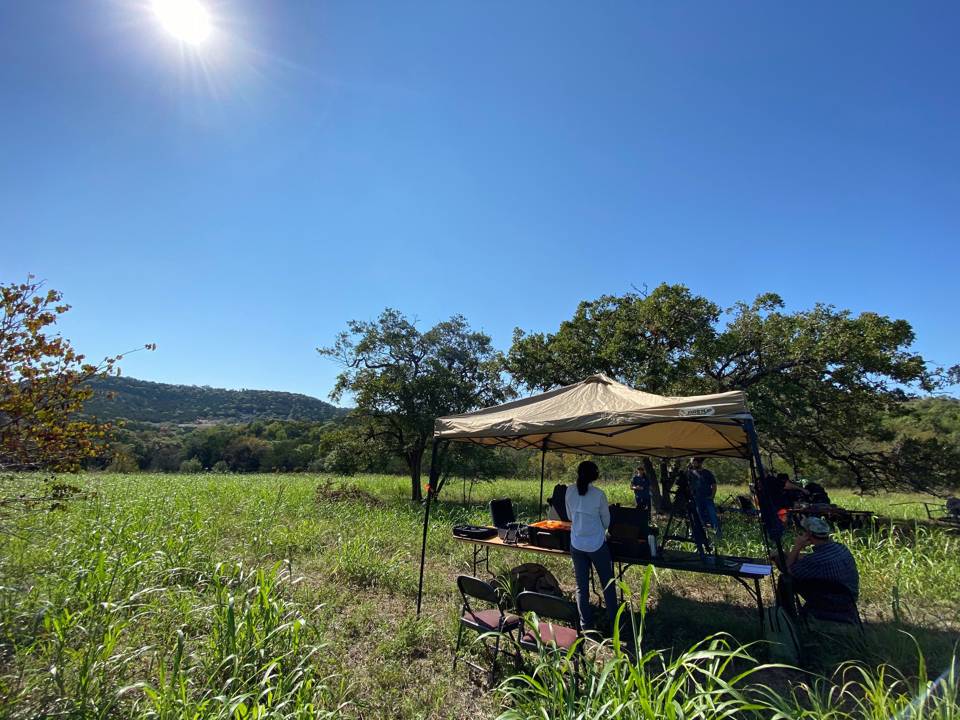 Behind the scenes of filming the Plow
Behind the scenes of filming the Plow
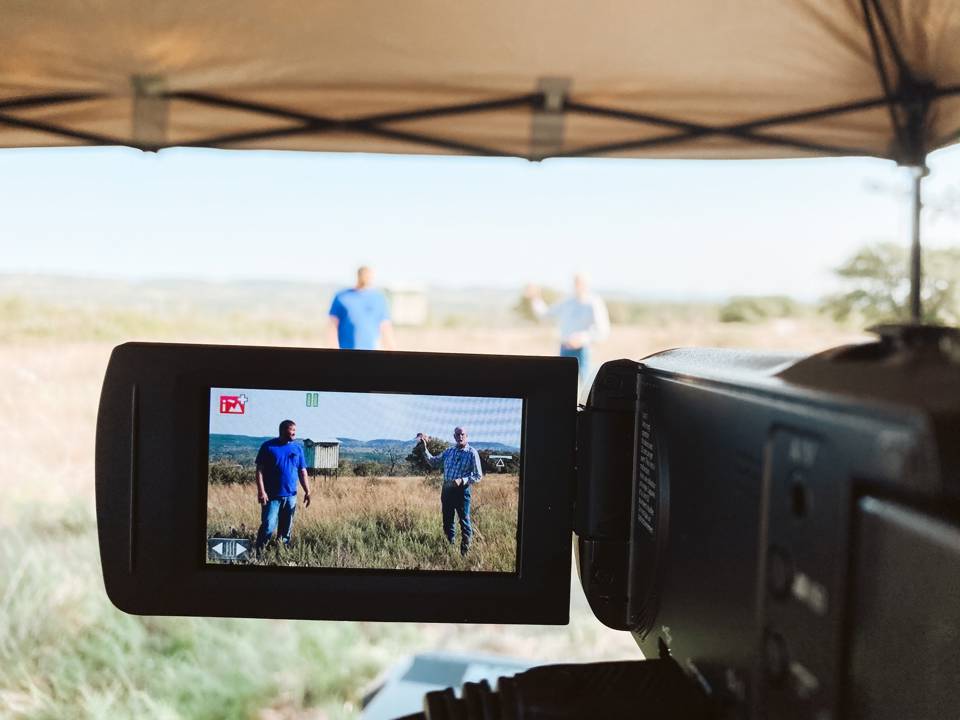 Behind the scenes of filming the Gun
Behind the scenes of filming the Gun
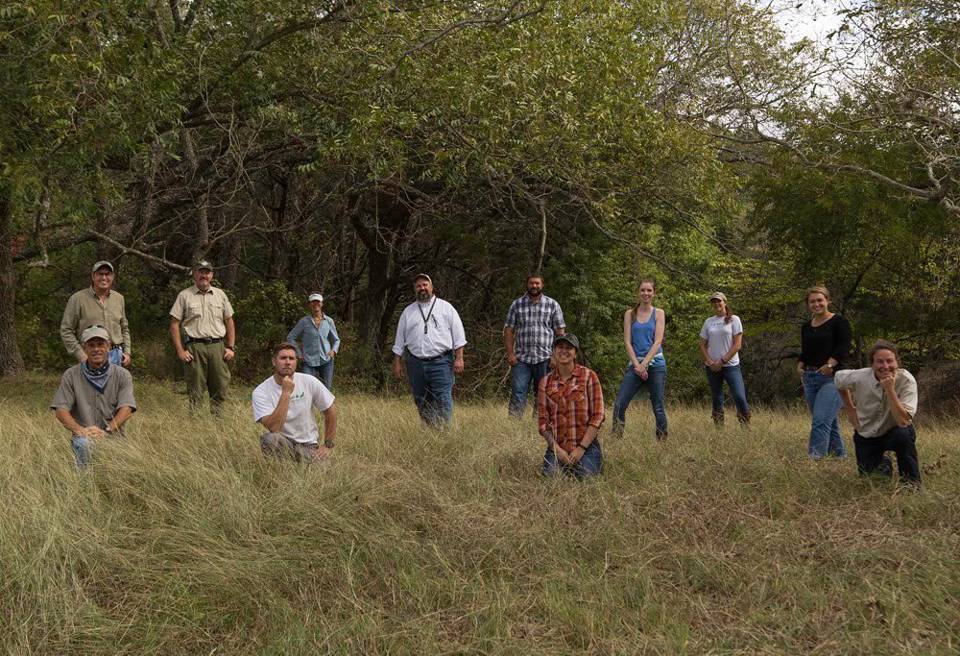 The Leopold Live team after filming the Fire episode
The Leopold Live team after filming the Fire episode






